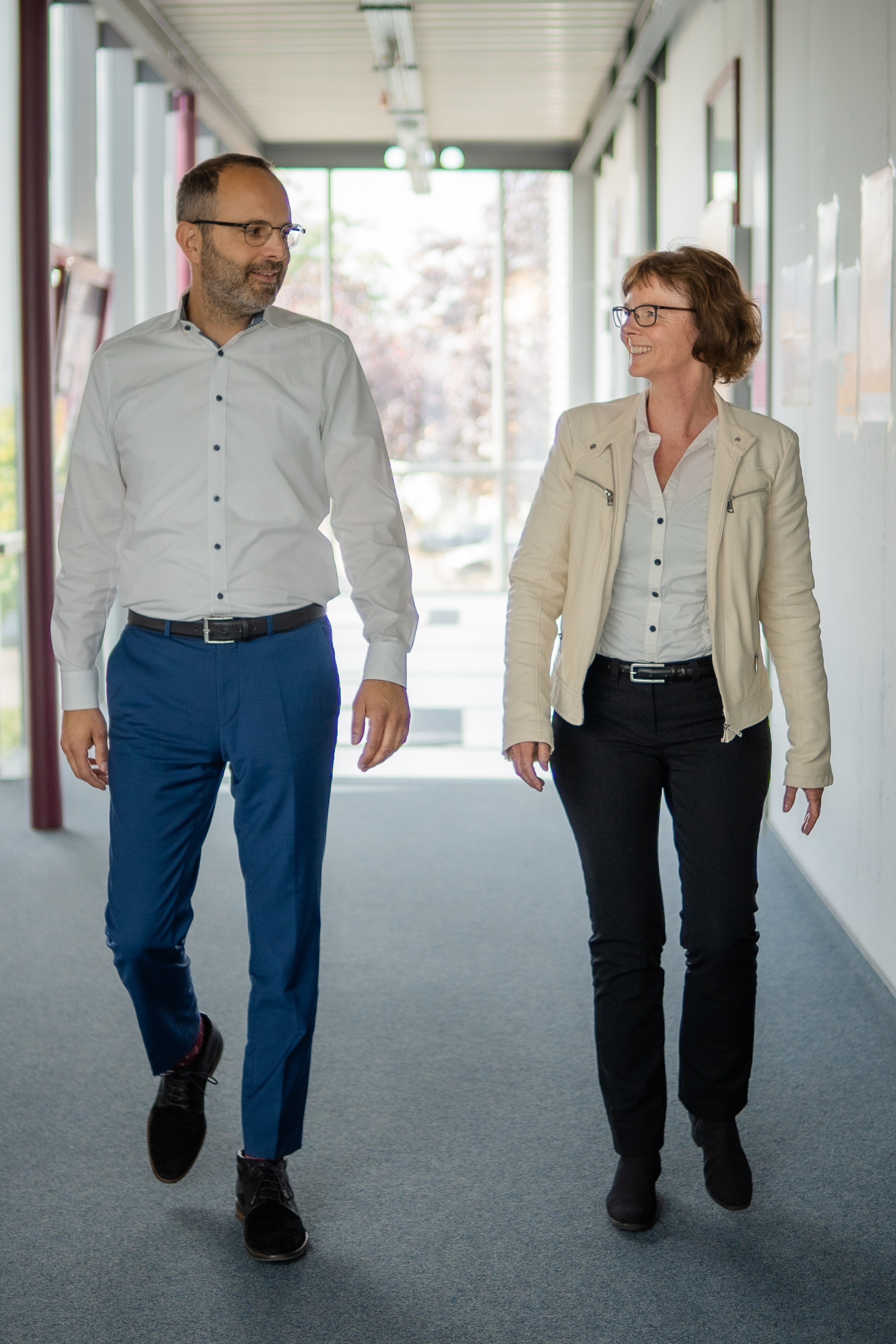Passion
Being able to work independently and realize one's own dreams is what drives many people into research and development. When the joy of sharing knowledge and mentoring students is added, a professorship at a university of applied sciences (HAW) can become a dream job.
An example at Kaiserslautern University of Applied Sciences shows the opportunities this position offers to people who are passionately curious.
Research with team spirit
Most people look to renowned universities when it comes to outstanding science. However, the fact that universities of applied sciences (UASs) also achieve outstanding results is less well known. The University of Applied Sciences Kaiserslautern has developed expertise in many areas and is attracting international attention. Its successes are mainly due to its strong tradition of interdisciplinary cooperation. In this interview, Professors Monika Saumer and Sven Urschel talk about their experiences working across disciplinary boundaries. The chemist and the engineer cooperate in projects situated at the intersection between life and engineering sciences.
Why does interdisciplinary exchange work so well at your university?
Monika Saumer:
First and foremost, it is because of the people who teach and research here. Our colleagues are very curious and open to other disciplines. We all know that working in interdisciplinary teams gives us fresh insights by allowing us to approach complex problems from different angles.
Sven Urschel:
In addition, almost all of us have previously worked in industry and are accustomed to working together in different project teams on an interdisciplinary basis. That’s a huge advantage.
What are the structural requirements for interdisciplinary work?
Saumer:
We are a small university, so interdisciplinary work is almost a necessity. It starts with the fact that we share laboratory equipment and experimental facilities. That’s not a given. However, it is what has made us so effective, especially in comparison to large research institutes.
Urschel:
Urschel:
Our offices are close together, so we see a lot of each other. We have coffee together, talk about a new idea in the cafeteria, maybe even have a beer or do sports together after lectures. It almost feels like a family here.
Saumer:
Over time, a certain familiarity develops, and then everything is much less complicated. Trust is important; the feeling that one's own contribution is valued in the team. When we publish our research results, for example, it is important that the credit is clearly attributed to the right people.
What other qualifications do researchers need?
Saumer:
The ability to confidently admit that you don't know something within your team. Recognizing your own limits is an important prerequisite for working successfully across disciplinary boundaries.
Urschel:
That takes courage in the scientific world, but we have a collegial environment. You need empathy to understand other disciplines and the people who represent them. We always try to find a common language.
How do you benefit professionally from the collaborations?
Urschel:
Once you get into a different way of thinking, you come up with ideas you would never have had otherwise. Working with colleagues from the life sciences, for example, has given me, as an engineer, interesting insights – and opened up a whole new area of research. It started with the joint development of an artificial intestine. We were working with living cells in the project and it became clear to me how sensitive biological systems react. My current focus as a scientist is on the topic of "soft actuators", a promising technological approach.
Saumer:
In addition to my creativity as a scientist, I also benefit from teaching. The seminars become more interesting when I think outside the box in order to broaden my students' horizons.
What other doors does cross-disciplinary research open?
Urschel:
Interdisciplinarity leads to more internationalization. We have become more visible worldwide since we started publishing as research teams and showcasing the university's expertise in high-quality publications.
Saumer:
Our basic research gets a boost too. In interdisciplinary projects, you really have to dig deep—sometimes literally. For instance, in our materials research, we look at things on a microscopic level.More knowledge-driven science results in more third-party funding in large projects, such as those awarded by the German Research Foundation. With larger budgets, we can offer young scientists interesting prospects, for example in the context of cooperative doctorates.
What arguments would you use to persuade research talents to pursue a professorship at the University of Applied Sciences in Kaiserslautern?
Urschel:
First and foremost is the freedom that a professorship at a university of applied sciences offers. We are free to determine what we research and how we design our teaching. Our workshops and laboratories are well equipped, which allows for excellent research. I appreciate the intellectual exchange with researchers from such diverse fields and the team spirit that we share here. That makes it easy to settle in, get started and thrive.
Have you learned anything from your interdisciplinary work for your private life as well?
Saumer:
Interdisciplinary research always begins with a conversation. The goal is to understand different perspectives and develop a common vocabulary. For example, we discuss differences in the use of technical terms and designations extensively. I have become so adept at listening to other professional cultures that it has even rubbed off on my private communication. Misunderstandings can be clarified much earlier or avoided altogether. That makes everything much more relaxed.

Bild: Johanna Woll, HSKL

Sven Urschel
Professor für Elektrotechnische Systeme der Mechatronik



